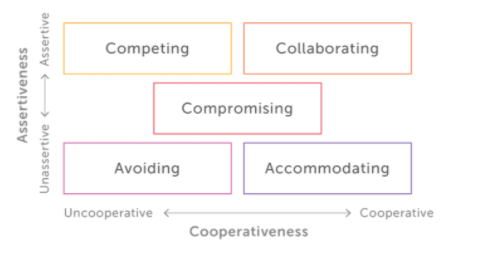Avoiding conflict is not the goal
How can I stop getting into arguments?
How do I disagree with my boss?
How can I get people to agree with me?
These are things that I hear from my clients all the time. And at the heart of this is a need or desire to avoid conflict.
We seem to have been brought up to see conflict as an inherently bad thing and yet it’s our reaction to conflict that can be difficult rather than the conflict itself.
Differences of opinion are necessary for creativity and innovation and its in the difficult moments with people when you disagree that you need to push through, use all your communication skills and your knowledge about the human psyche to get to the part where the ideas are bigger and better and the relationships are bigger and better too.
Here are a few thoughts for you:
If you feel strongly about something – how does that feel? What are you trying to do when you speak with someone else? Are you trying to beat them down or are you trying to get them to see the “truth” in what you’re saying because then everyone will win? Well if that’s the case, know that the person in front of you has their own “truth” and may feel as passionately as you about it.
Here’s where the notion of “positive intent” comes in – think to yourself, “what is this person trying to achieve positively for themselves and maybe even for me?”
The Thomas Kilmann model of conflict (TKI) is a great resource and model to look at conflict. In his model there are 5 conflict styles based on two dimensions, assertiveness and cooperativeness – or in other words how much your focus is on yourself or on others.
The 5 management styles are:

The idea is that all of these styles are useful – you may have a preference for one depending on your level of assertiveness and cooperativeness, but the trick is to learn how to use all of the 5 styles appropriately.
So when do you compete and when do you avoid? When do you choose to collaborate and when do you choose to accommodate? And if you compromise, is that the right course of action?
Which style do you tend to lean into? What style are you less comfortable with? What is this stopping you from doing?
Let me know in the comments below and then do join me at SoniaGavira on facebook, for more discussions.
